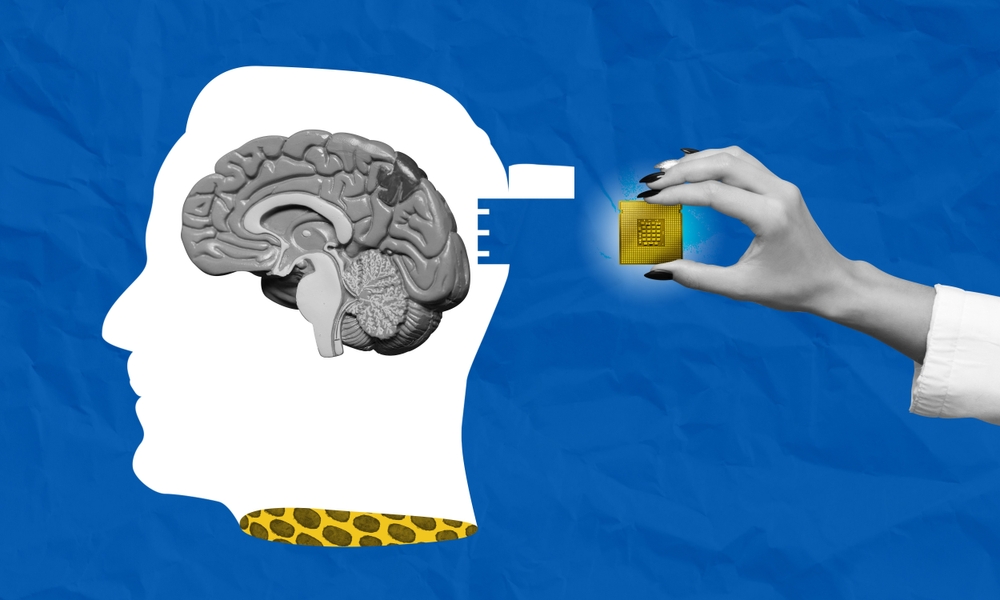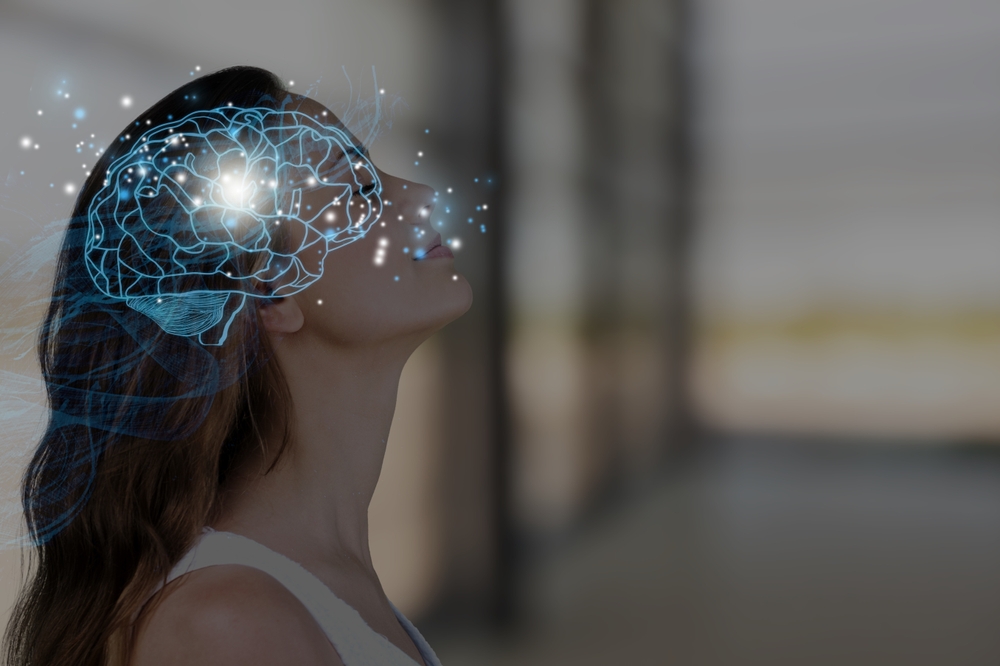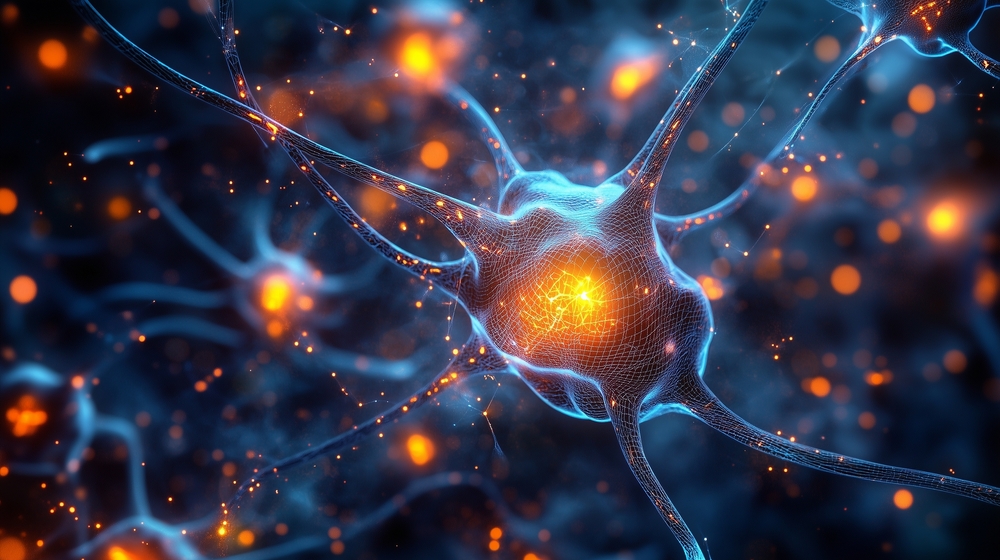Scientists Have Found The ‘Off’ Switch For Anxiety Without Any Side Effects

We live in an age where our minds rarely get quiet. Notifications buzz. Expectations build. The pressure to be productive, connected, and “fine” never lets up. And beneath all of it, for millions of people, there’s a low hum of unease—a persistent current of anxiety that seems to follow them everywhere. If you know that feeling, you’re not alone.
Anxiety has become one of the most common mental health challenges in the world today. It’s often invisible, but deeply real. It steals sleep, joy, and focus. It turns small moments into battles and peaceful days into internal storms. And for far too long, we’ve treated it with a combination of guesswork and general solutions—medications that might work, therapy that takes time, advice that sometimes feels hollow.
But what if anxiety isn’t just a mystery clouding our minds? What if it’s the result of something precise—something that can be understood, mapped, and even gently turned down at the source?

Rewriting the Brain’s Rules on Anxiety
Anxiety. It’s a word that echoes through doctor’s offices, late-night thoughts, and the quiet spaces of our everyday lives. For years, scientists believed they had a decent grasp on its mechanics—linking it primarily to serotonin imbalances, overactive amygdalas, and heightened stress responses. As a result, treatment largely revolved around antidepressants and anti-anxiety medications designed to manipulate serotonin levels. While these treatments have helped many, they often come with a frustrating caveat: they’re slow to act, riddled with side effects, and don’t work for everyone. The question that’s lingered in the background is a powerful one—what if we’ve been looking in the wrong place all along?
Enter a groundbreaking study led by Pei Chin of the University of Pennsylvania and George Augustine of Temasek Life Sciences Laboratory. Instead of focusing on the usual suspects like the amygdala or prefrontal cortex, their attention turned to an often-overlooked part of the brain: the cerebellum. Traditionally known for its role in motor coordination, the cerebellum hasn’t received much attention in emotional or psychological studies. But Chin and Augustine suspected something deeper might be happening there—especially in how it relates to anxiety.
What they discovered turned conventional wisdom on its head. In mice, they observed that lower serotonin levels in the cerebellum correlated with higher anxiety, while mice with more serotonin in this brain region displayed significantly calmer behavior. This finding was surprising, even disruptive, because it contradicted decades of assumptions that more serotonin simply equals less anxiety. But they didn’t stop at observing. The team directly manipulated serotonin-releasing neurons in the cerebellum—and in doing so, they discovered they could literally dial anxiety up or down, almost like flipping a switch.
Think about that. With targeted precision, they were able to increase or decrease anxiety-related behavior in real time. No broad-spectrum drugs. No side effects. Just an informed tap into the brain’s circuitry. That’s not just revolutionary for neuroscience—it’s deeply hopeful for anyone who’s ever struggled with anxiety that feels uncontrollable.
The implications of this research reach far beyond lab mice. It opens the door to a new era of mental health treatment—one grounded in specificity, where doctors might one day fine-tune anxiety at the circuit level, rather than trying to blanket the brain with chemicals and hope for the best. It reframes anxiety not as a mysterious cloud, but as a measurable, actionable brain state with clear biological triggers and mechanisms.
This is more than a medical breakthrough. It’s a reminder of how much we still don’t know—and how much potential there is in asking better questions. In shifting our focus, even slightly, we may find that the answers we’ve been searching for aren’t in rewriting the entire brain—but in simply understanding it better.

The Cerebellum — More Than Just Movement
For most of modern neuroscience, the cerebellum has played a backstage role—supporting balance, coordination, and motor control. It was seen as the brain’s quiet engineer, fine-tuning our physical movements but rarely credited with emotional or psychological influence. But recent findings are challenging that narrow view, revealing the cerebellum as a far more complex and integrated part of how we think, feel, and react to the world around us.
Emerging research over the past decade has shown that the cerebellum is richly connected to brain regions involved in cognition, emotion, and memory. Studies using functional MRI have found cerebellar activity lighting up during tasks involving fear, anxiety, and social interactions—areas once thought to be the sole domain of the limbic system. This suggests the cerebellum might not just be helping us move through the world physically, but also emotionally—regulating how we process stress, anxiety, and even trauma. What makes the recent serotonin-cerebellum study so compelling is that it builds on this evolving understanding. By identifying serotonin-releasing neurons in the cerebellum as active regulators of anxiety, the research places this once-overlooked brain region squarely at the center of emotional regulation. It also explains why previous attempts at treating anxiety with general serotonin-boosting drugs, like SSRIs, often produce mixed results. If serotonin works differently depending on where in the brain it’s acting, then our current medications may be firing at the wrong targets—or at least missing key ones.
In other words, it’s not just about how much serotonin we have, but where that serotonin is working. That’s a subtle but crucial distinction. It’s like knowing you need light in your house—it won’t help to flip the kitchen switch if you’re trying to read in the living room. Precision matters. And what this research suggests is that we’ve been treating anxiety with a floodlight when we might have needed a laser pointer all along.
Ultimately, the cerebellum is stepping out from behind the curtain. No longer just the movement manager, it’s revealing itself as a key emotional player—perhaps even one of the brain’s most underrated guardians of mental balance. And the more we pay attention to it, the closer we may come to truly effective, deeply human-centered treatments for anxiety and beyond.

Rethinking Serotonin — The Myth of the “Happiness Chemical”
For years, serotonin has been labeled the “feel-good” or “happiness” chemical—a kind of emotional thermostat that, when balanced, keeps us calm and content. This idea became so culturally entrenched that millions have come to believe anxiety and depression are simply the result of “low serotonin.” That belief, while comforting in its simplicity, is now being challenged by more nuanced science—and the latest cerebellum research adds even more complexity to the conversation.
The reality is, serotonin isn’t just one thing. It’s a multifunctional neurotransmitter that plays different roles depending on where in the brain it operates. In one region, it may enhance mood. In another, it may regulate digestion, sleep, or anxiety. It acts like a versatile signaler—shifting its message based on context. That’s why the one-size-fits-all approach of many antidepressants, especially selective serotonin reuptake inhibitors (SSRIs), often leads to unpredictable results. Some people feel relief. Others feel numb, agitated, or nothing at all. And still others experience side effects that outweigh the benefits.
The recent findings about serotonin in the cerebellum reinforce this deeper understanding. The study showed that higher serotonin in this specific brain region reduced anxiety in mice. But it wasn’t about flooding the whole brain with serotonin. It was about regulating a particular circuit. This reveals something crucial: serotonin isn’t inherently calming or stimulating—it’s all about the pathway it travels. That’s a game-changer in how we talk about mental health. It urges us to shift from asking, “Do you have enough serotonin?” to asking, “Is serotonin doing the right job in the right place?”
This also means that pharmaceutical treatments of the future may move away from broad, brain-wide chemical interventions and toward more targeted neuromodulation—treatments that influence very specific neurons or regions. Scientists are already exploring technologies like deep brain stimulation, optogenetics, and precision pharmacology to influence brain circuits with far greater accuracy than traditional medication. If serotonin’s effect on anxiety depends on its location and delivery method, then the future lies in understanding those fine details rather than continuing to chase the elusive “chemical imbalance” theory.
Ultimately, the serotonin myth is being replaced with something far more empowering: complexity. It turns out our emotions aren’t controlled by a single switch, but by a vast, interconnected network of systems that adapt, respond, and evolve. And understanding that complexity—not oversimplifying it—may be the key to healing.

Toward Precision Mental Health — A New Era of Treatment
Imagine a world where anxiety treatment isn’t a gamble. Where relief doesn’t come with a long list of side effects, and where emotional suffering is approached with the same precision we expect from heart surgery or cancer care. That’s the promise behind this new wave of neuroscience—an era of precision mental health, where treatments are tailored not just to the individual, but to the specific neural circuits driving their symptoms.
The discovery of an “off switch” for anxiety in the cerebellum marks a powerful shift in this direction. Rather than flooding the entire brain with serotonin, researchers demonstrated that targeting a specific group of neurons could control anxiety behaviors in mice. This is radically different from the current pharmacological model, which often operates more like a sledgehammer than a scalpel. Most medications used to treat anxiety today affect broad regions of the brain, and because of that, they can cause side effects like fatigue, sexual dysfunction, weight gain, or emotional blunting. The approach shown in this study bypasses all of that by working at the root—quietly and precisely, like flipping the right switch in a dark room.
This opens the door to a new generation of treatments that could be non-invasive, side-effect-free, and faster-acting. While this research is still in its early stages and has so far only been tested in mice, it lays critical groundwork for human studies. Tools like optogenetics (which use light to control neurons) and neuromodulation therapies are already being explored in human trials for other conditions, such as depression and epilepsy. It’s not a stretch to imagine a future where anxiety could be treated through finely tuned stimulation of the cerebellum—whether through advanced pharmaceuticals, neurofeedback, or even wearable brain tech.
But beyond the science and technology, there’s a deeper paradigm shift here: the move from a symptom-based approach to a circuit-based approach in mental health. That means understanding the brain less like a messy soup of chemicals and more like a complex electrical grid—where the goal is not to dump more power into the system, but to find and repair the faulty wires. It’s an approach rooted in respect for the brain’s intricate design, and in the belief that suffering deserves not just compassion, but clarity and precision.
In many ways, this shift mirrors broader trends in medicine—where cancer treatments are becoming genetically personalized, and chronic illnesses are managed through data-driven interventions. Mental health is finally catching up. And the idea that we could someday treat anxiety as accurately as we treat high blood pressure or diabetes is no longer science fiction—it’s on the horizon.
A Call to Rethink, Reflect, and Redesign Our Relationship with Anxiety
So where does this leave us—not just as patients or practitioners, but as people? As a society that has long treated anxiety as something to silence, suppress, or medicate away, what do we do with the knowledge that it may be far more nuanced, more specific, and more treatable than we thought?
First, it calls for a mindset shift. Anxiety isn’t a personal failure or a character flaw. It’s not something we “just have to live with,” nor is it always the result of vague chemical imbalances. It’s often the product of specific brain circuits misfiring, responding to perceived threats with the volume turned all the way up. That doesn’t mean anxiety isn’t real or serious—it means it’s understandable, trackable, and maybe even correctable with the right knowledge and tools. This alone should offer hope to the millions who carry anxiety as a silent weight.
Second, it reminds us to be cautious of oversimplified narratives. The “low serotonin” story, while comforting for some, has led to a generation of people relying on treatments that may not address the real root of their distress. As science evolves, we must be willing to evolve our stories, too. Mental health isn’t a monologue—it’s an ongoing conversation between biology, environment, thought patterns, and history. And the more accurate that conversation becomes, the more powerful our healing can be.
Lastly, this research invites us to take a more holistic, yet informed, approach to anxiety—one that blends the best of modern neuroscience with self-awareness, emotional literacy, and community support. Yes, breakthroughs in brain science are essential. But they’re most powerful when paired with real-world changes: more compassion in how we treat mental health, more resources for prevention, and more curiosity instead of judgment when someone is struggling.
We are standing at the edge of a new chapter—one where anxiety is no longer a mystery or a life sentence, but a puzzle we’re learning how to solve. And in that effort, science isn’t the only tool. Our willingness to rethink old beliefs, to seek knowledge over stigma, and to demand better answers—that’s part of the solution, too.
Loading...

